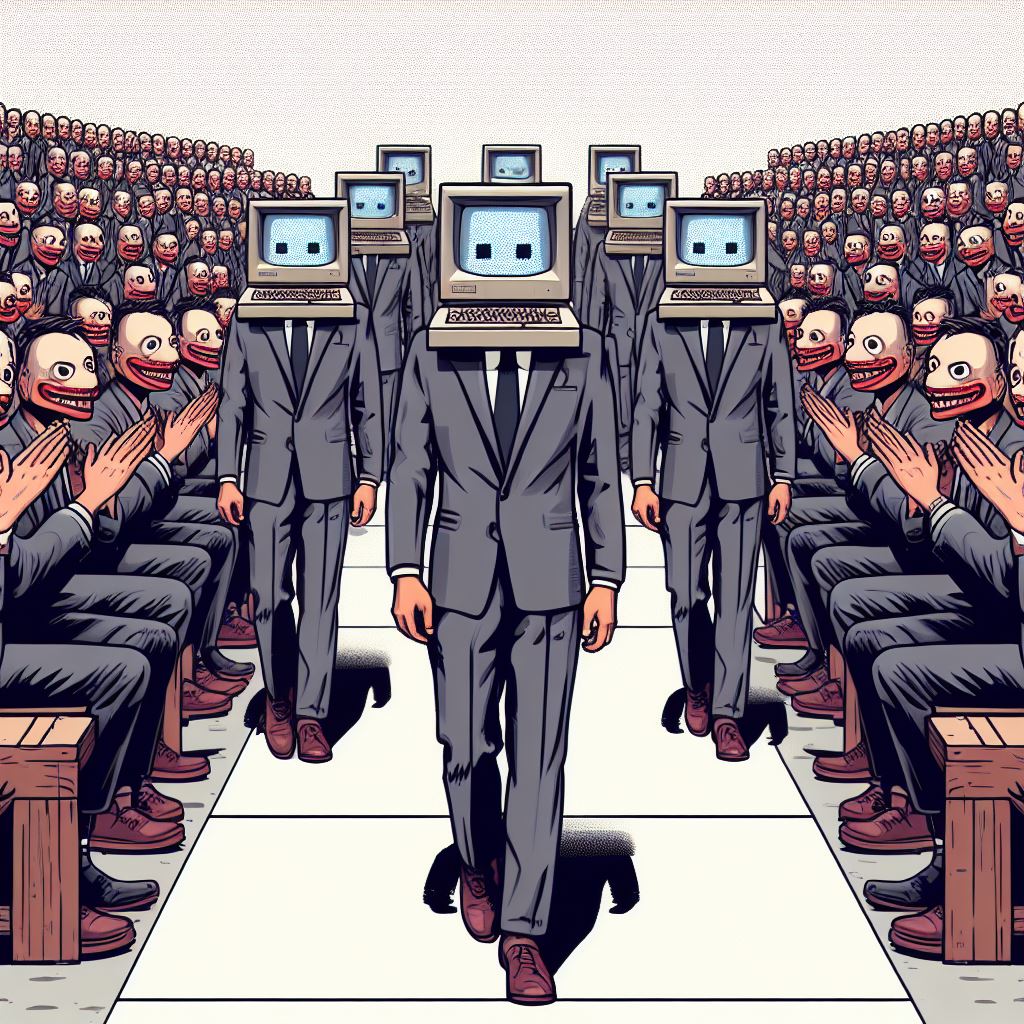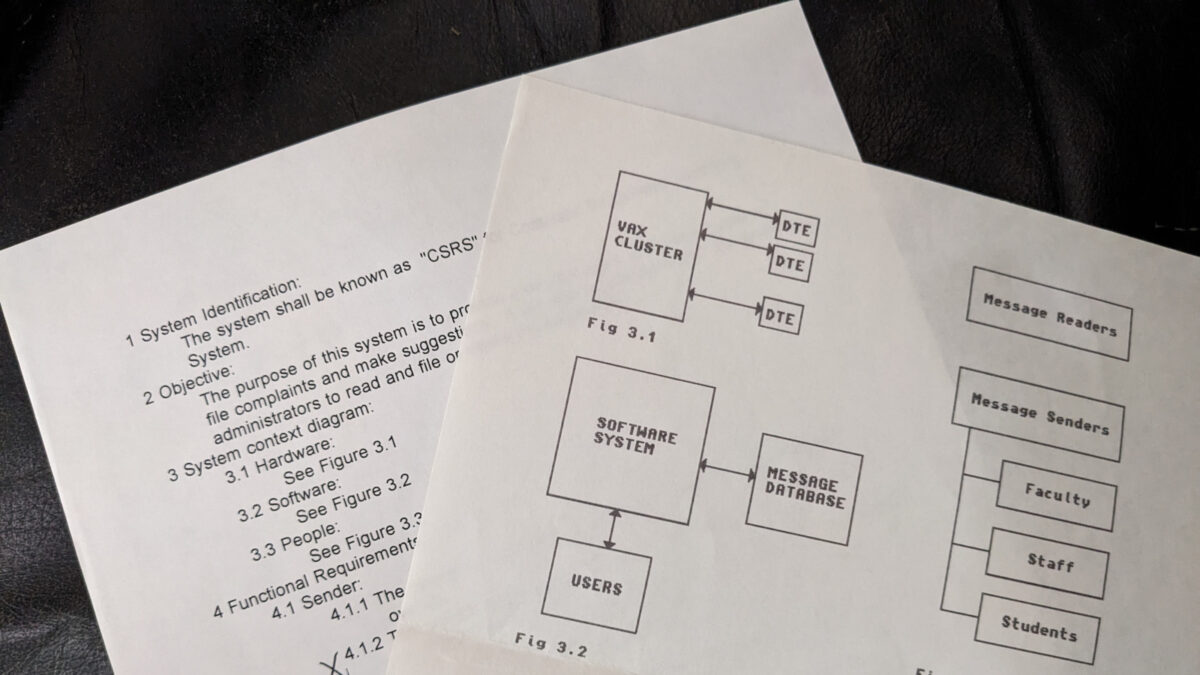It’s not fashion itself that’s irritating, it’s the rabid advance of the crowd so devoted to the fashion. I mean fashion in the broad sense of a popular, conventional approach to anything. I’m not writing only of clothing or hairstyle. In fact, those aspects of societal obsession have diminished compared to my youth when wearing a mohawk to school might have been a blatant invitation to fight. (Not really in Martinez. Not enough kids to divide into serious cliques.)
In proper perspective, fashion can be fun. You know the choice is arbitrary and you can cast it aside for something more important. You’re going to wear sandals to the beach, not your Doc Martens. That’s logical. Pick the higher values over the lesser values. In a tie, flip a coin.
I’ve always enjoyed working out the best solution versus whatever’s popular. I don’t mean picking the opposite for the sake of being provocative. I mean deciding for myself what’s right and not being afraid of the ninnies and the twits. I loved computers at first sight. My first experience was pair-programming BASIC on an Apple II+ my math teacher hauled into school every day. Despite being mysterious, the computer behaved deterministically. Perhaps there were multiple ways to achieve a result, but it was the result that mattered.
It did not occur to me to consider whether messing around with personal computers was fashionable. It was a niche hobby like playing Dungeons and Dragons, but the music I listened to said it didn’t matter. Alice Cooper commanded “Flush the Fashion”. The clones destroyed government. They were destroying time. Mike Ness complained “you look so plastic, you could be a barbie doll” and that he was “anti-fashion”.
When I discovered PHP in 1997, it was obvious to me how much better it would make building web applications. I was immediately more productive. To that point in Internet history, a hard line divided content (HTML files) and data processing (Perl cgi-bin files). PHP allowed merging and intermingling the logic and the presentation.
Despite it being obvious to me, building with PHP was a hard sell to clients for a few years. PHP was not fashionable. It didn’t come out of giant software companies like Sun or Microsoft. Eventually, though, that we could build better sites at lower cost won out. PHP might never have been fashionable. It moved quickly into being the default choice that fashionistas declared uncool, boring, too easy. Yet, it remains overwhelmingly dominate. (PHP is probably used by about 75% of all Web sites).
I recently stumbled on Larry Ellison’s comment about fashion from 2008. Dan Farber’s piece about it from then covers the details. (Oh for the days listening to The Gillmor Gang commuting to Berkeley!) Ellison described the computer industry as more fashion-focused than women’s clothing.
The interesting thing about cloud computing is that we’ve redefined cloud computing to include everything that we already do. I can’t think of anything that isn’t cloud computing with all of these announcements. The computer industry is the only industry that is more fashion-driven than women’s fashion. Maybe I’m an idiot, but I have no idea what anyone is talking about. What is it? It’s complete gibberish. It’s insane. When is this idiocy going to stop?
Larry Ellison speaking at Oracle OpenWorld 2008
We’ll make cloud computing announcements. I’m not going to fight this thing. But I don’t understand what we would do differently in the light of cloud.
Fifteen years later, it might be hard to remember when putting all of your data in the data center of a online retailer wasn’t a default choice. It became fashionable, and Oracle hopped on the bandwagon despite its leader considering the conversation to be idiotic. Of course, today many people are rethinking the choice in the context of intrusions. Microsoft, infamous for building systems vulnerable to security breaches, lost control of their entire cloud infrastructure in 2023. A researcher at Tenable found a way to access cross-tenant applications and sensitive data, such as authentication secrets. Everything in Azure was exposed, including access to banks.
You won’t hear someone argue for cloud computing by calling it fashionable, but you will hear this argument in essence, wrapped in palatable terminology. You’ll hear that all the big players are using it. The point is both true and a non sequitur. More insidiously, anything fashionable will be described as modern.
Modern is a euphemism for fashionable.
Forget it. Being modern (fashionable, hip, chic, stylish, bussin’, whatever), does not belong in software architecture. Ellison said he wouldn’t fight it (cloud computing), meaning he’d cynically adopt the buzzwords. That went beyond not fighting. It was surrender.
Instead, I recommend you decline the fight. Do what you know is best. Make choices based on rational arguments. I’m not referring to cloud computing specifically. Renting virtual server capacity often solves a problem perfectly. Reflexively choosing any solution based on how often you read about it on social media can only ever be right by accident.
Flush the fashion.


